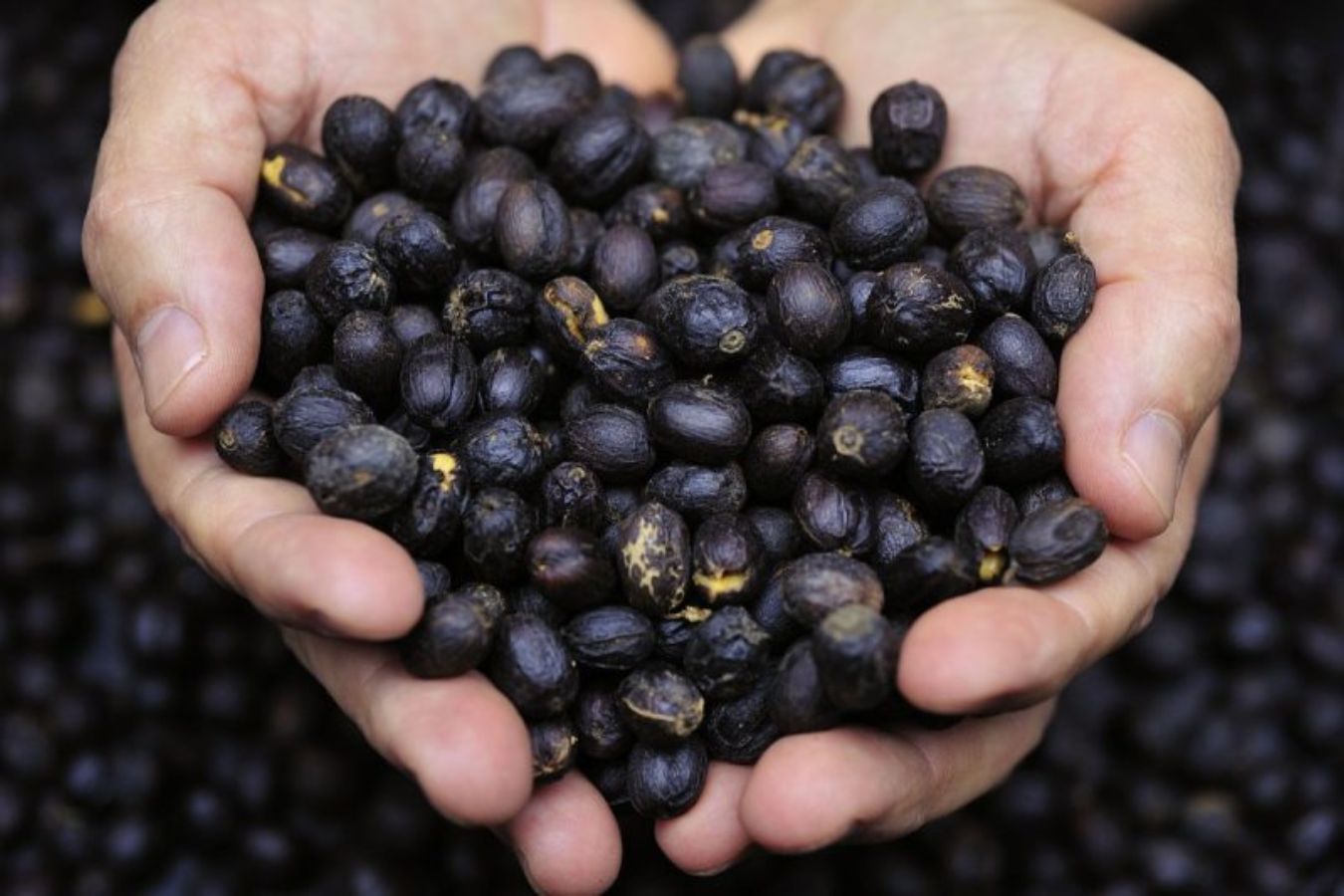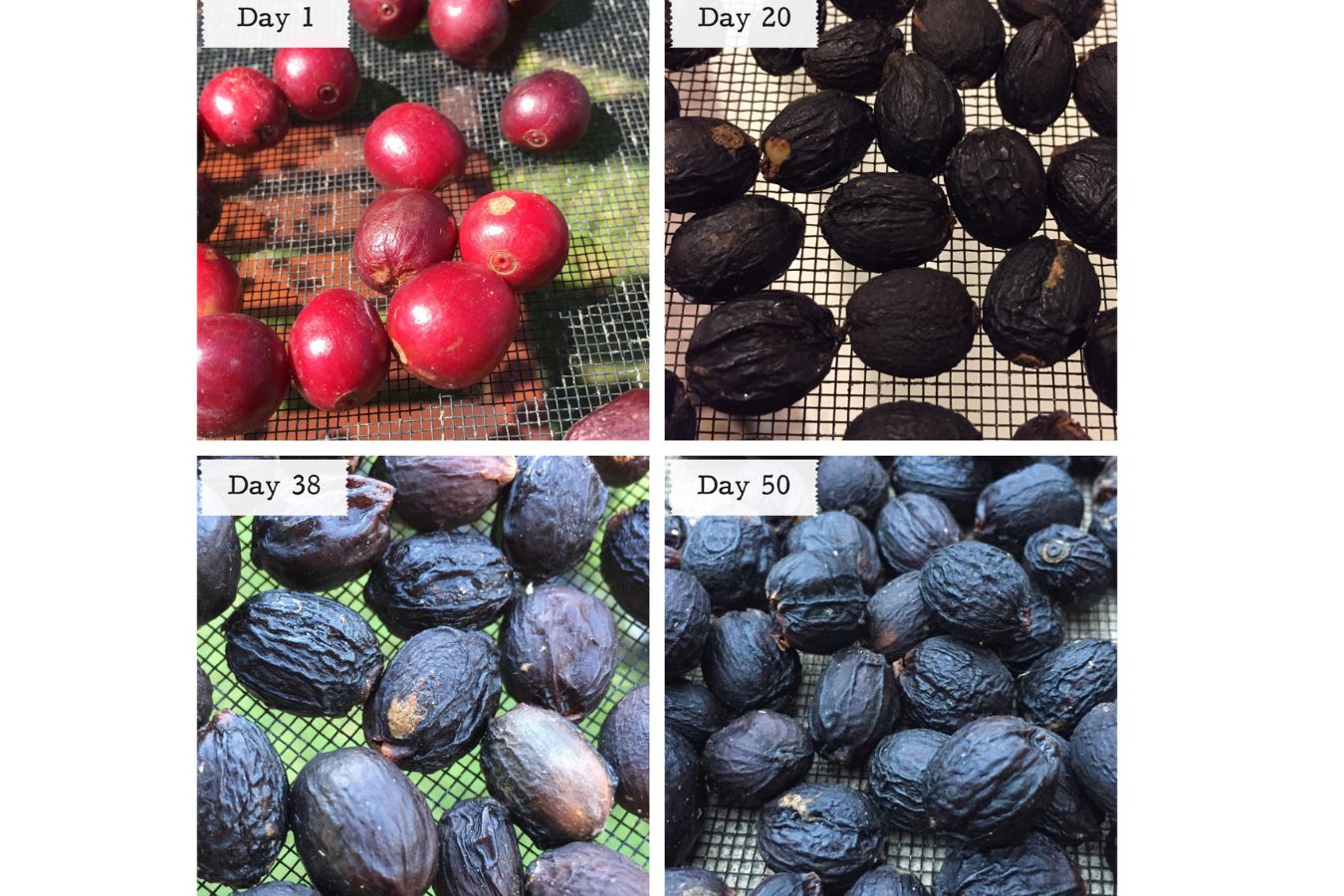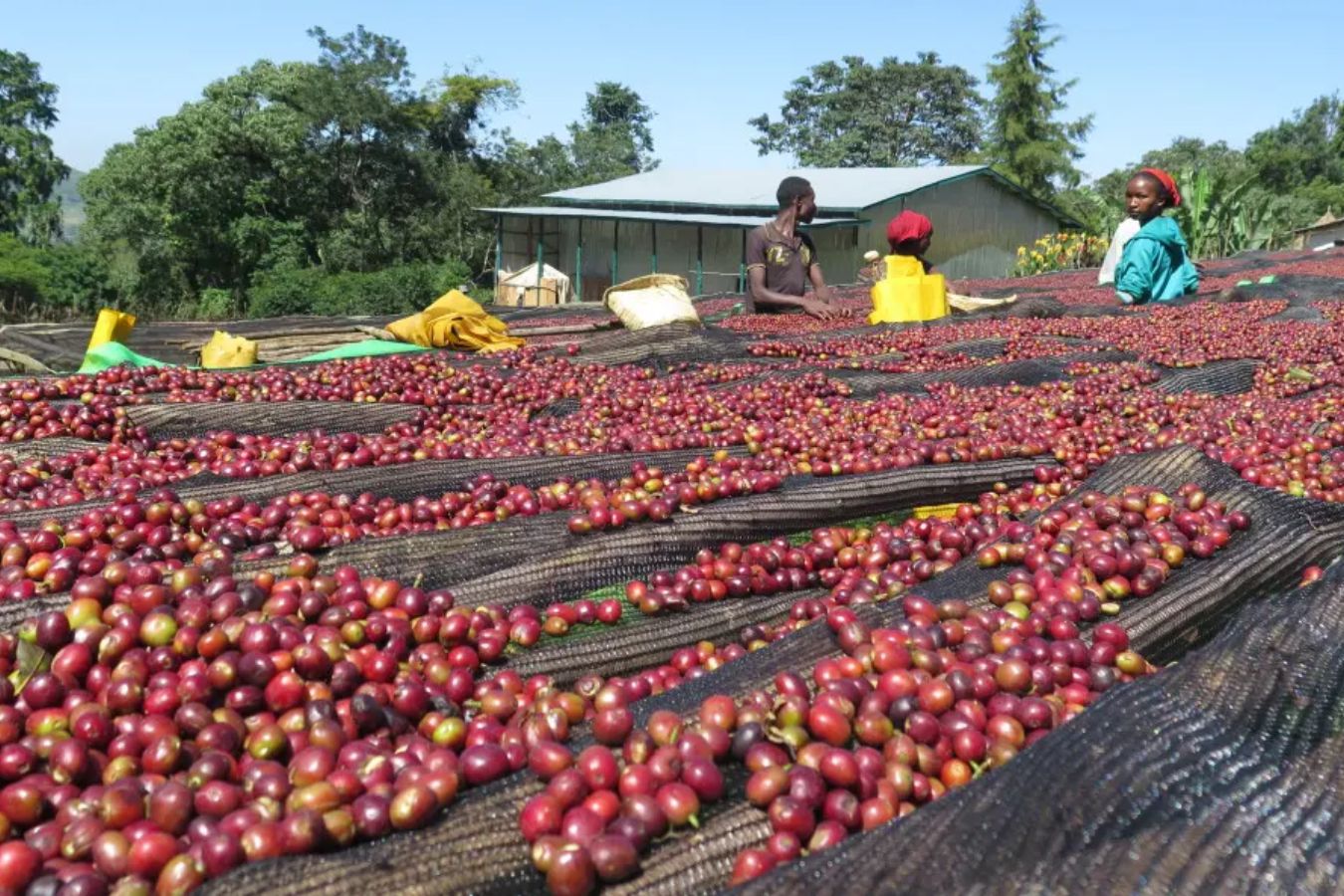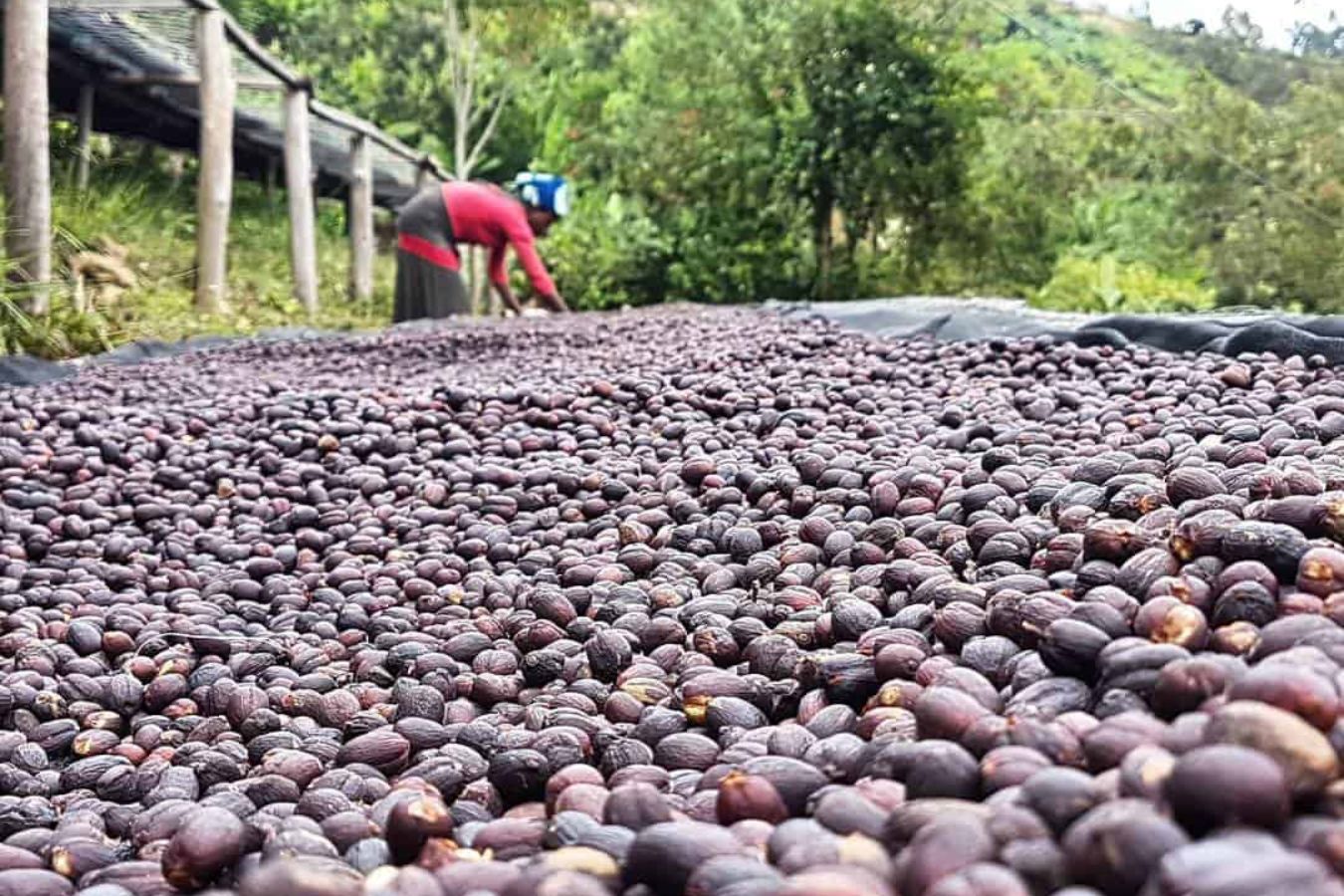
Some farmers in Da Lat, Daklak, have switched to this way of primary processing, and they’ve discovered the benefits and drawbacks of it and how to assure adequate quality control at each stage.
What is Natural Processing Method, and how does it work?
Coffee isn’t a bean at all. It’s a seed, after all. And ripe cherries have numerous layers, with two sources hidden inside (unless it’s a cult berry, there’s only one).

During coffee processing, these layers are removed, and the beans are dry and ready to roast. Coffee can be processed in a variety of ways: natural (natural) / dry, wet (washed) / washed, honey (honey)… However, cleansed and natural is the most popular, followed by the honey bee.
The simplest natural processing method is to leave the beans on the patio or rig to dry and wait for them to dry. After removing the dried cherry skins with a peeler, the green coffee is ready for grading and roasting. Preparation and washing do not require any water, unlike all other procedures.
Why should you go with Natural Process?
Farmers in Vietnam, particularly in the Central Highlands provinces, have shifted to the primary honey processing method, and some have also tried the natural processing approach, with mixed results.
Farmers chose natural processing for a variety of reasons. It utilizes less water than all other methods and provides higher financial benefits. Farmers must, of course, account for factors such as humidity, sunlight, temperature, etc.
Farmers are knowledgeable about natural coffee and are aware of the growing market demand. People now believe it makes their coffee more competitive, even though trends change over time.
Natural processing’s dangers
On the other hand, natural primary processing comes with risks – risks that might have a significant impact on producers.
Our country is well-known for its tropical monsoon environment, which has resulted in heavy rains and powerful winds. Making it easier for coffee to ferment does not ensure quality.

Any coffee farmer might be harmed by unexpected rain during harvest. In cherries, too much water has accumulated. The ripe coffee cherries may linger on the fallen branches initially, or the dried fruit may ferment due to this.
On the other hand, natural processing necessitates a lot of suns to dry. These coffees are particularly prone to moisture. When there are only a few kilograms of coffee in the drying yard, protecting it from sudden rains is simple, but it is more complicated when the weight is several hundred kilograms or several tons. You must plan ahead of time before making a purchase.
On the other hand, naturally processed coffee poses a more significant risk than washed or honey processed coffee for growers who cannot ensure these quality requirements.
Coffee that has been naturally processed is subjected to quality control
Harvest
Fruit farmers should pick only mature red coffee cherries. This is how ripe coffee looks (unless you grow Orange Bourbon or Yellow Catuai, for example). The sugar in the coffee develops as it ripens, resulting in the most excellent flavor.
Workers must be aware of the physical changes that cherries undergo. He said they could determine how much mucus there is by squeezing a cherry and counting how many drops come out. According to one study, higher mucilage levels result in better-tasting coffee, which found that it might account for 20% of the difference in tasting scores. It’s a positive sign if you have more than three mucus drops.
After selecting the cherries, the farmer must weigh them in a one-liter bucket. The yield notes are retained in the profile, and the results are divided by variety so they can be compared.
Rigging for drying
Before and after being put on the drying rack, ripe coffee cherries must be hand-sorted. Unripe cherries had to be removed, and workers had to hunt for ones with wormholes.
The high drying rack keeps the coffee on a clean, aired surface and aids in drying the ripe cherries.
Another thing to keep in mind is that if you make the coffee drying rack too big, you’ll have to turn the coffee with a tool, and the possibilities of turning the dry coffee are slim.
Stage of drying (np)
The ripe fruit is exposed to the sun for the first three days, and the night is fantastic. After the third day, shade them from 12 to 2 p.m. on the week’s hottest day. While the coffee is sheltered from the sun, leaving space on the rig for air to flow is critical.

Your coffee will reach the appropriate moisture level after 20-25 days, 10.5 percent for natural coffee, not 11-12 percent as many documents claim. Overfermenting will be more likely due to the significant amount of sugar left in the ripe fruit.
Farmers must test their coffee with a hygrometer. For improved precision, highly competent farmers advocate measuring humidity levels during the coldest portion of the day.
Coffee’s natural preservation
When it’s time to store the coffee cherries, they’re placed in a plastic bag with a sack to keep insects out. They’re then kept in a warehouse out of direct sunlight. Coffee is stored on elevated pallets to keep the bags off the ground. The warehouse’s humidity (60–65%) and temperature (19oC–25oC) are constantly monitored.
On average, it will take three months for the coffee to be ready for export. For the time being, it will remain stable.
If the moisture level of the coffee rises above 10.5 percent during this time, it is at risk of over-fermenting. As a result, farmers must collect samples every week to inspect and handle them promptly.
Natural process coffee is known for being the most simple to make. However, your coffee will not be genuinely excellent if you do not give time and attention.